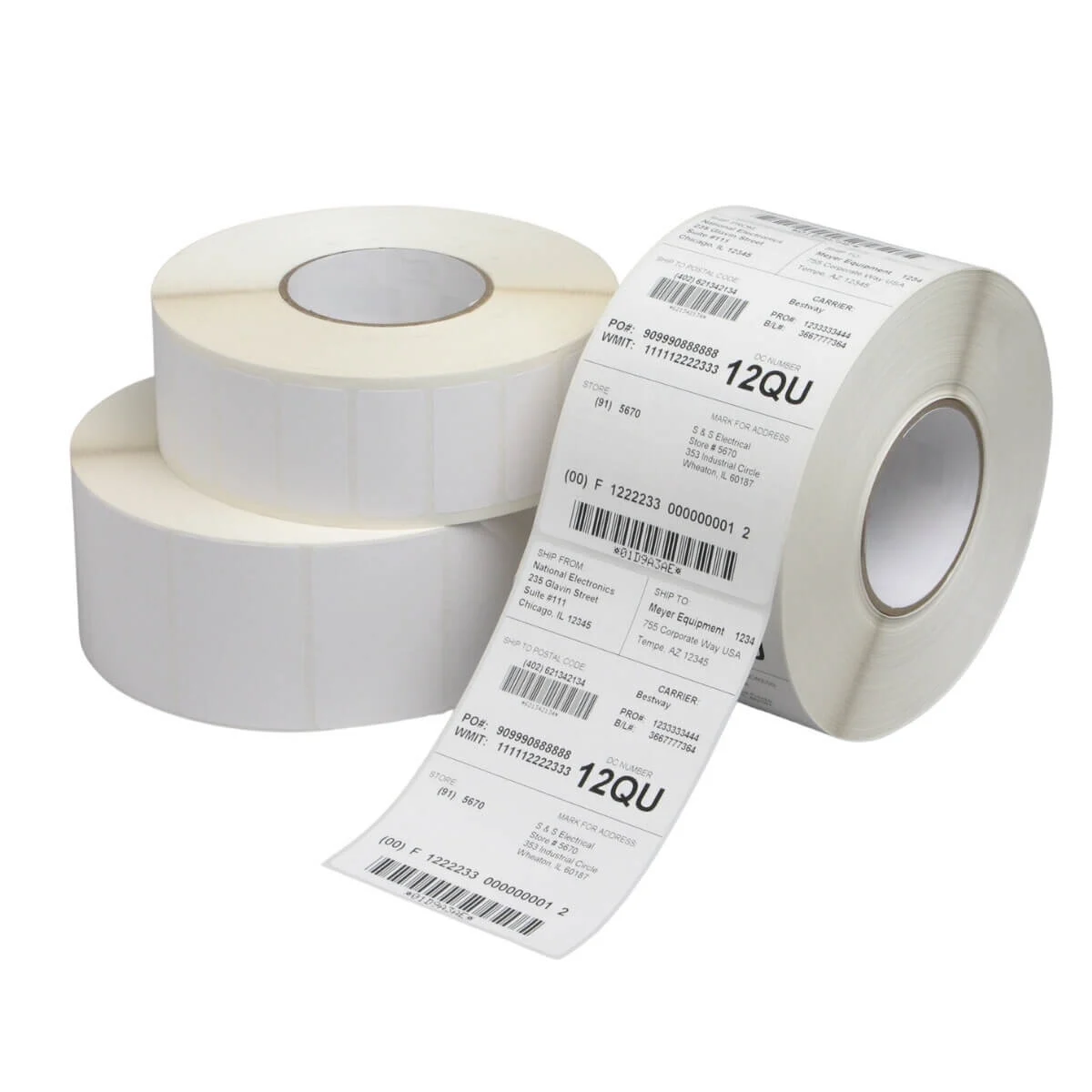
When companies invest in a label printer such as an Epson GP-C831, they ensure that all employees are able to read and understand what is inside a container.
Where the finest products along with everything you need for “do-it-yourself” label printing are just a click away.
Call Now: +1-866-299-0066 or Live Chat

As you start to evaluate thermal printing options for your home or business needs, you’ll start to encounter two methods: direct thermal and thermal transfer. Both methods involve a printhead that applies heat to the labels to make the design or words appear.
However, the difference between direct thermal and thermal transfer labels is that direct thermal printing uses chemically treated, heat-sensitive labels that get black when placed under the heat of the thermal printhead and thermal transfer printing involves a heated ribbon that results in durable, long-lasting designs on various print materials.
Each printer has its ideal use cases. Thermal label printers produce great barcodes given their highly accurate image printing. And thermal transfer printers produce precise designs within tight tolerances to make even small barcodes readable by scanners. Both printers offer one or two-dimensional barcode printing with graphics and text.
So which printer and label types are right for your use case? Here’s a more in-depth look at each and when to use them.
Direct thermal prints without a ribbon, which makes these printers simpler to maintain because there is less to stock to keep them operational. You won’t have to worry about keeping ink, toner or ribbons on hand.
And while the labels that direct thermal printers produce often have a long shelf life, these labels do not hold up well in hot environments or when subjected to direct sunlight for extended periods. These labels also aren’t great for subjection to abrasion.
Direct thermal labels subjected to heat or sunlight might darken, which can make the text or barcode harder to read. Usage conditions are the main factor for deciding whether direct thermal printing is right for your use case.
Common use cases for these printers include:
Using a direct thermal printer has many outstanding benefits. Here’s a look at why you should consider this print type.
While direct thermal printers are outstanding for many applications, they do have their limitations as well. Here’s a look at what you need to know.
Thermal transfer printing provides crisp and clear details. And you can print on glossy surfaces if need be. The use of a thin ribbon roll that the printhead melts creates the design or image. Labels then absorb the ink as it becomes part of the media.
When you use the right materials, thermal transfer printing holds up even in extreme heat and when subjected to moist environments. The image or design won’t rub off, making this one of the most durable print options.
These printers produce incredibly consistent print jobs to offer the reliability businesses need. Of course, you’ll need to stock ribbons and ensure they match your printer to ensure reliable, quality results. The right labels also make a big difference. But once you figure out how to keep the right supplies on hand, you’ll be able to print archival-worthy projects that hold up under extreme conditions.
Common use cases for these printers include:
Thermal transfer printing offers many outstanding benefits. Here’s a look at those benefits as you evaluate whether this printer is right for your application.
While thermal transfer printing has many benefits, there are also some limitations to these printers. Here’s a look at some factors you should be aware of.

Now that you know more about direct thermal vs. thermal transfer printing, you’re armed with valuable information to guide your decision-making between the two printer types.
Ultimately, there are two major deciding factors when evaluating the two printing types.
Ultimately, you can evaluate the printer based on use cases. And if your use cases are mixed and you want only one printer taking up space in your business or home, it’s best to go with a thermal transfer printer. Just be sure to purchase an additional ribbon to keep on hand to avoid printing disruptions.
Purchasing a high-quality printer is essential to ensuring you get high-resolution labels. But you also want to know that your labels and supplies are compatible with your printer type and model.
The team at DuraFast Label Company can aid you in finding labels and supplies for your printer model no matter how old it is or what supplies you’re looking for. Contact the team at 1-866-299-0066 or live chat with them in the bottom right corner of their website during business hours.
Further reading: